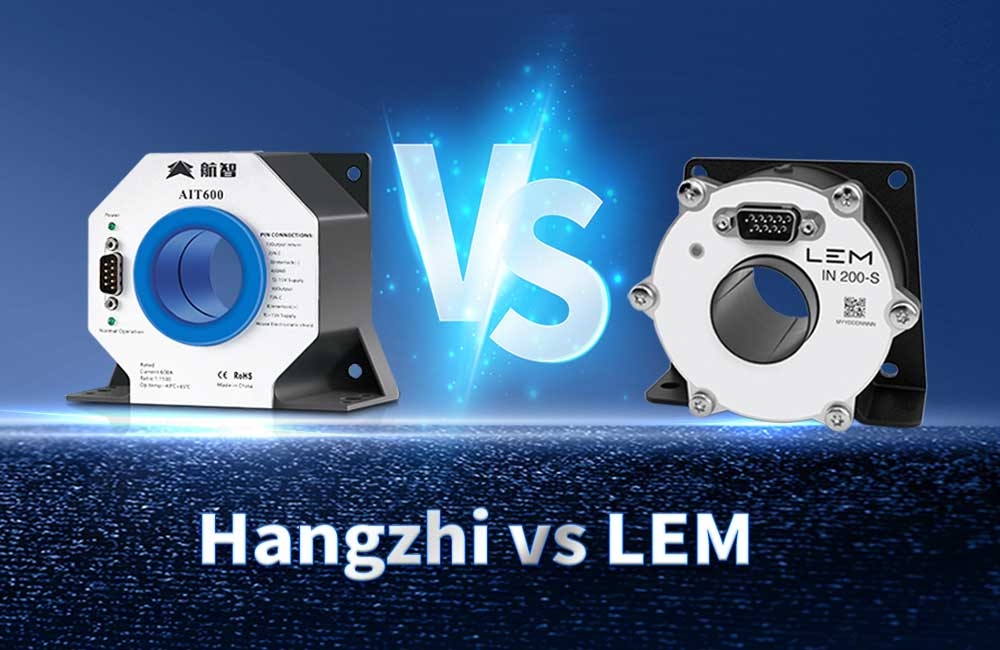
Hangzhi Precision vs. LEM: Comparing Current Transducer Solutions
Current transducers play a crucial role in modern industry, enabling precise measurement of electrical current for applications ranging from renewable energy to medical equipment. For businesses looking to invest in reliable current sensing solutions, Hangzhi Precision and LEM often stand out as leading contenders. Both brands offer advanced technology designed to deliver accuracy, stability, and adaptability — but how do they really compare?
In this article, we’ll provide an in-depth comparison between Hangzhi Precision and LEM, breaking down their product ranges, technology, performance, applications, and value. By the end, you’ll have a clear understanding of which current transducer solution best fits your business needs.
Hangzhi Precision and LEM
Hangzhi Precision is a Shenzhen-based manufacturer focused on producing high-accuracy current transducers with advanced digital integration features. Their emphasis on precision and innovation has positioned them as a competitive player in the global sensor market, particularly for industries requiring ppm-level accuracy.
LEM, headquartered in Switzerland, boasts decades of experience as a pioneer in current sensing technology. Their extensive product range utilises Hall-effect and fluxgate principles and is well-regarded for reliability and broad application compatibility. LEM serves sectors like industrial automation, electric vehicles, and renewable energy, earning a strong reputation for quality.
Both companies are known for innovation and precision, making them worthy of direct comparison by any business seeking reliable current transducers.
Product Portfolio Comparison
Hangzhi Precision’s Offerings
Hangzhi’s product line includes key series such as AIT, IIT, DIT, HIT, and BMS current transducers. These products are designed around advanced fluxgate sensor technology, enabling ultra-high accuracy often measured in parts per million (ppm). They also feature digital output options such as RS485 and CAN-BUS, facilitating seamless integration with modern control systems.
- AIT Series: High-precision closed-loop transducers suitable for power quality monitoring and industrial automation.
- IIT Series: Offers a balance of accuracy and cost-efficiency for general-purpose applications.
- DIT and HIT Series: Digital output models optimised for smart grid and electric vehicle charging infrastructure.
- BMS Sensors: Tailored for battery management systems with integrated digital interfaces.
LEM’s Offerings
LEM provides a wide array of current transducers including the HLSR, LAH, and CAB series. Their products utilise both Hall-effect and fluxgate technologies to serve diverse applications:
- HLSR Series: Hall-effect closed-loop transducers for industrial drives and energy management.
- LAH Series: High-accuracy fluxgate sensors ideal for power measurement and inverter control.
- CAB Series: Flexible solutions for automotive and traction control applications.
LEM’s range emphasises rugged design and compatibility across industrial, automotive, and energy sectors.
Technology and Performance Comparison
Measurement Accuracy
Hangzhi Precision’s fluxgate-based transducers achieve extremely high accuracy, often reaching the parts-per-million level (10 ppm), which suits precision-critical applications like medical imaging and power quality analysis. LEM’s LAH series, also fluxgate-based, offers strong accuracy around 0.05%, excellent for industrial and renewable energy use but less precise than Hangzhi’s top-end models.
Technological Approaches
Hangzhi relies heavily on fluxgate technology, which provides high sensitivity and stability over temperature variations. This makes them ideal for environments demanding reliable, drift-free measurements.
LEM utilises a mix of Hall-effect and fluxgate sensors. Hall-effect sensors excel in robustness and cost-efficiency but have lower accuracy than fluxgate models. LEM’s dual-technology approach allows broader market coverage but can mean trade-offs in precision.
Output Signal Types
Hangzhi offers multiple output types including analog current/voltage, RS485, and CAN-BUS digital communication. This flexibility supports integration with smart grids and advanced control systems.
LEM’s products primarily provide analog current and voltage outputs, with fewer digital communication options. This may limit integration in highly digitalised environments but suits traditional industrial setups.
Application Suitability
Hangzhi Precision
Hangzhi’s transducers are widely used in:
- Medical equipment like MRI machines where ultra-precision current sensing is critical.
- Power quality analysers and metering devices demanding ppm-level accuracy.
- Renewable energy systems requiring digital communication for smart monitoring.
- Battery management systems (BMS) in electric vehicles with integrated data outputs.
LEM
LEM’s solutions shine in:
- Solar inverter monitoring and grid stabilisation.
- Industrial drives and factory automation.
- Automotive traction control and electric vehicle charging.
- General power electronics where robust, reliable sensors are key.
LEM’s long-standing presence in automotive and industrial sectors gives it an edge in ruggedness and mass deployment.
Cost-Effectiveness and Value Proposition
LEM typically positions itself as a premium brand with pricing reflecting its Swiss heritage and broad global support network. Their products justify the cost through reliability and proven performance across industries.
Hangzhi balances affordability with high technical standards, often offering competitive pricing for ultra-precise digital sensors. This makes Hangzhi a strong contender for businesses seeking advanced technology without premium price tags.
Choosing the Right Current Transducer
Both Hangzhi Precision and LEM provide quality current transducers with unique strengths. Choose Hangzhi if your project demands the highest accuracy, digital integration, and cost-effective innovation. Opt for LEM if you prioritise established global support, proven reliability, and rugged performance in traditional industrial or automotive environments.
Consider your application’s precision needs, integration requirements, and budget to make the best choice.
Explore Hangzhi Precision’s Product Range
Ready to discover Hangzhi’s full range of precision current transducers? Visit Hangzhi Precision’s product page or contact their expert team to discuss your specific requirements and request samples.
FAQs: Hangzhi vs. LEM Current Transducers
Does Hangzhi offer technical support or documentation for integration?
Yes. Hangzhi provides comprehensive support including detailed manuals, CAD files, and integration guidance. Their team assists engineers transitioning from legacy systems to ensure smooth implementation.
Where are Hangzhi current transducers manufactured?
Hangzhi’s products are manufactured in Shenzhen, China, with strict quality control processes to meet international standards and ensure supply chain reliability.
What certifications do Hangzhi transducers meet?
Hangzhi transducers hold global certifications such as CE, RoHS, UL and ISO 9001, demonstrating compliance with industry and export regulations.
Can I request samples or evaluation units from Hangzhi?
Yes, Hangzhi offers sample programs and evaluation kits to support prototyping and testing prior to bulk purchase.
How does Hangzhi handle custom or large-scale orders?
Hangzhi supports custom specifications and large-scale manufacturing, offering flexibility to OEMs similar to LEM, with fast turnaround and competitive pricing.
